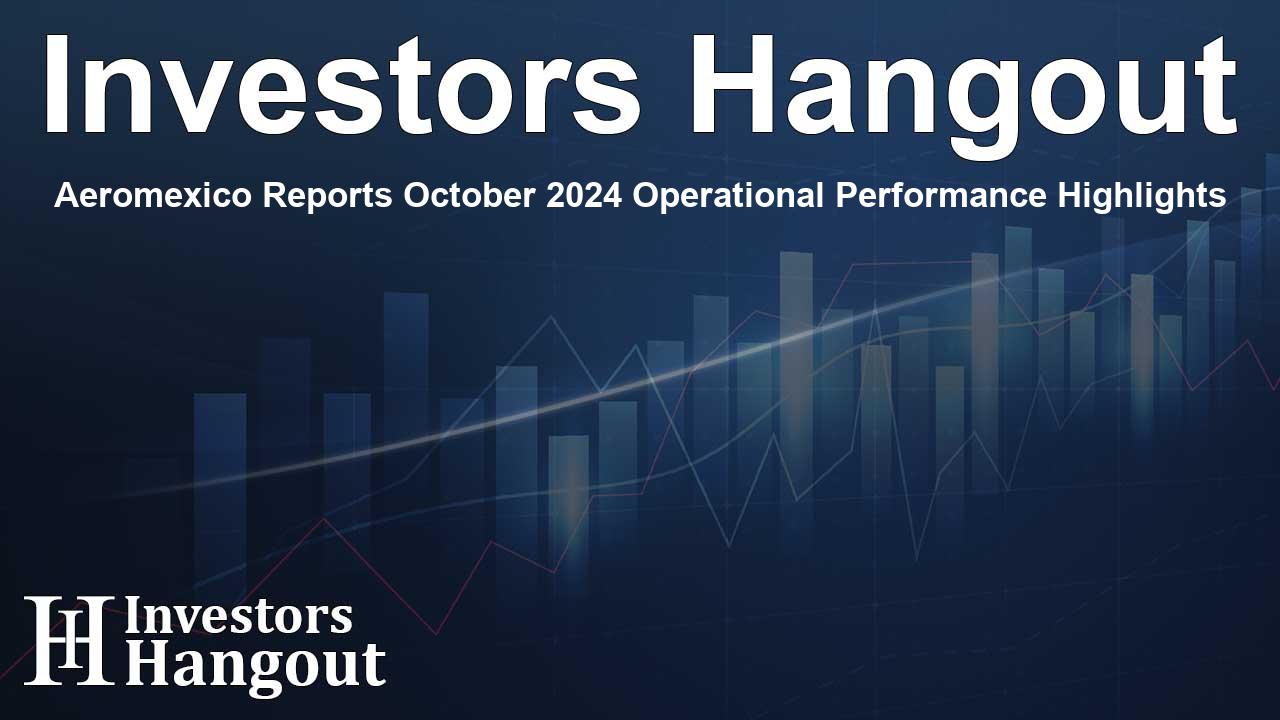Aeromexico Reports October 2024 Operational Performance Highlights

Aeromexico's October 2024 Operational Results
Grupo Aeromexico S.A.B. de C.V. (NASDAQ: AERM) has published its operational metrics for October 2024, revealing a mixed performance on various fronts. In this report, we delve deeper into the key findings from this month, including passenger transport, capacity growth, and more.
Passenger Traffic Overview
This October, Aeromexico transported approximately 2,040,000 passengers. This figure signifies a slight decline of 0.9% compared to the previous year. However, it is noteworthy that international passenger numbers saw an increase of 15%, while domestic passenger numbers experienced a decrease of 6.6% during the same period.
Capacity Analysis
Aeromexico's capacity has shown a promising upward trend, with a total capacity measured in available seat kilometers (ASKs) rising by 8.9%. Specifically, the international capacity climbed by 16.1%, although domestic capacity recorded a minor drop of 3.3% year-over-year.
Demand Metrics
In terms of demand, Aeromexico saw a robust growth of 9.1% year-over-year. When segmented, international demand surged by 16.6%, while domestic demand saw a reduction of 4%, all when compared against October 2023 figures.
Load Factor and Efficiency
The load factor for October 2024 stood at an impressive 85.4%. This is a slight increase of 0.1 percentage points from last year's performance. Breaking it down further, the international load factor improved by 0.4 percentage points, while the domestic segment witnessed a decrease of 0.7 percentage points.
Overall Performance and Insights
To sum up, Aeromexico’s operational results for October indicate a diversified performance across various metrics. The airline continues to increase its international reach while facing challenges in domestic travel. Such statistics are crucial not only for assessing current performance but also for strategizing future growth initiatives.
Glossary of Terms
To better understand the metrics discussed, here are some key terms:
- RPKs: Revenue Passenger Kilometers, which represent one passenger transported one kilometer.
- ASKs: Available Seat Kilometers, the product of available seats and distance flown.
- Load Factor: The percentage of seats filled by passengers relative to total seats available.
- Passengers: The total number of people transported by Aeromexico.
Frequently Asked Questions
What were Aeromexico's total passengers in October 2024?
Aeromexico transported approximately 2,040,000 passengers in October 2024.
How did international and domestic traffic compare?
International traffic increased by 15%, while domestic traffic saw a decrease of 6.6% compared to the previous year.
What was the load factor for Aeromexico in October 2024?
The load factor for Aeromexico was 85.4%, slightly higher than in October 2023.
How did Aeromexico's capacity change?
Overall capacity increased by 8.9%, with international capacity growing by 16.1% and domestic capacity decreasing by 3.3%.
What is the significance of RPKs and ASKs?
RPKs measure demand, while ASKs indicate the airline’s capacity; both are crucial for understanding operational performance.
About The Author
Contact Hannah Lewis privately here. Or send an email with ATTN: Hannah Lewis as the subject to contact@investorshangout.com.
About Investors Hangout
Investors Hangout is a leading online stock forum for financial discussion and learning, offering a wide range of free tools and resources. It draws in traders of all levels, who exchange market knowledge, investigate trading tactics, and keep an eye on industry developments in real time. Featuring financial articles, stock message boards, quotes, charts, company profiles, and live news updates. Through cooperative learning and a wealth of informational resources, it helps users from novices creating their first portfolios to experts honing their techniques. Join Investors Hangout today: https://investorshangout.com/
The content of this article is based on factual, publicly available information and does not represent legal, financial, or investment advice. Investors Hangout does not offer financial advice, and the author is not a licensed financial advisor. Consult a qualified advisor before making any financial or investment decisions based on this article. This article should not be considered advice to purchase, sell, or hold any securities or other investments. If any of the material provided here is inaccurate, please contact us for corrections.
